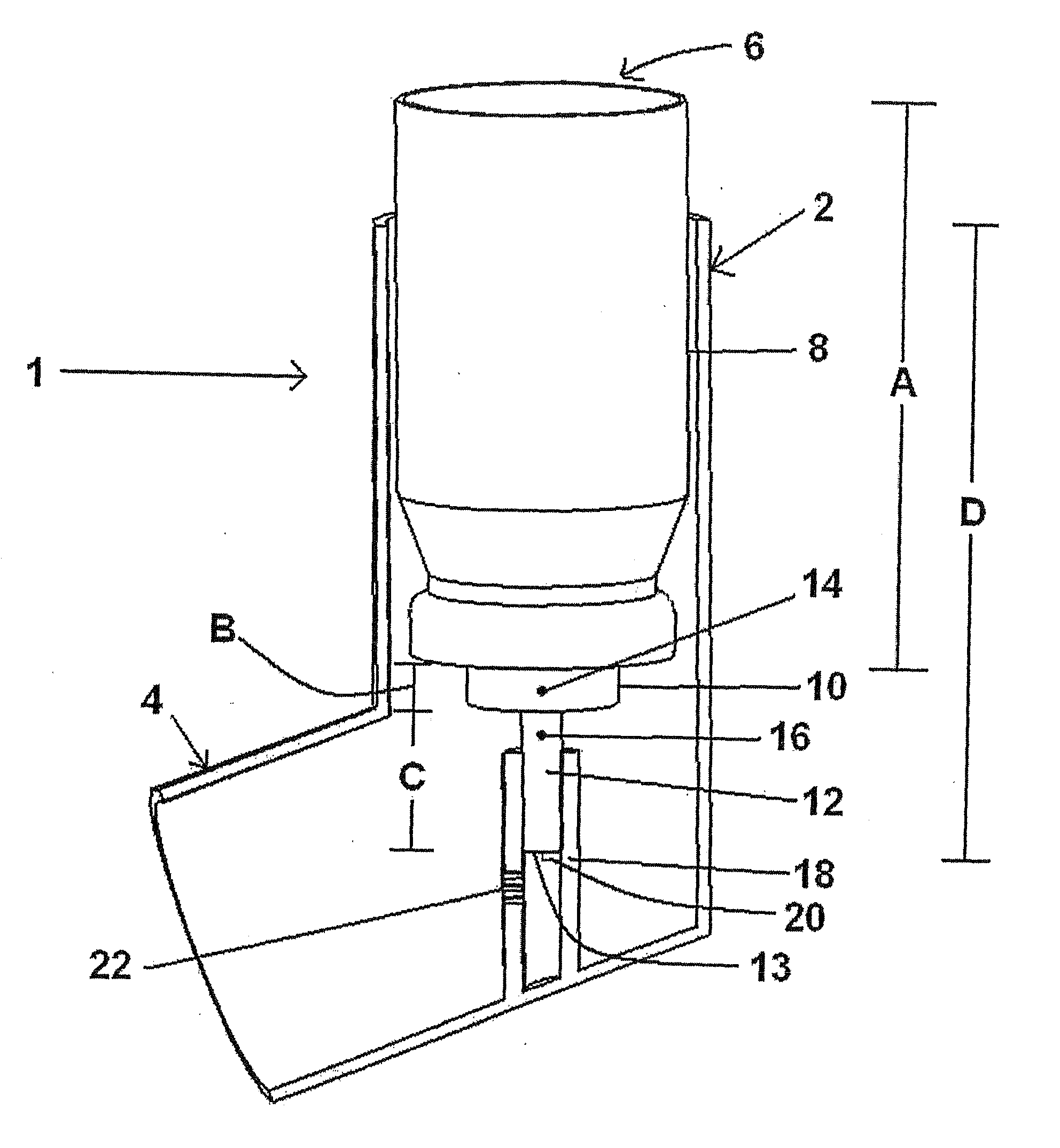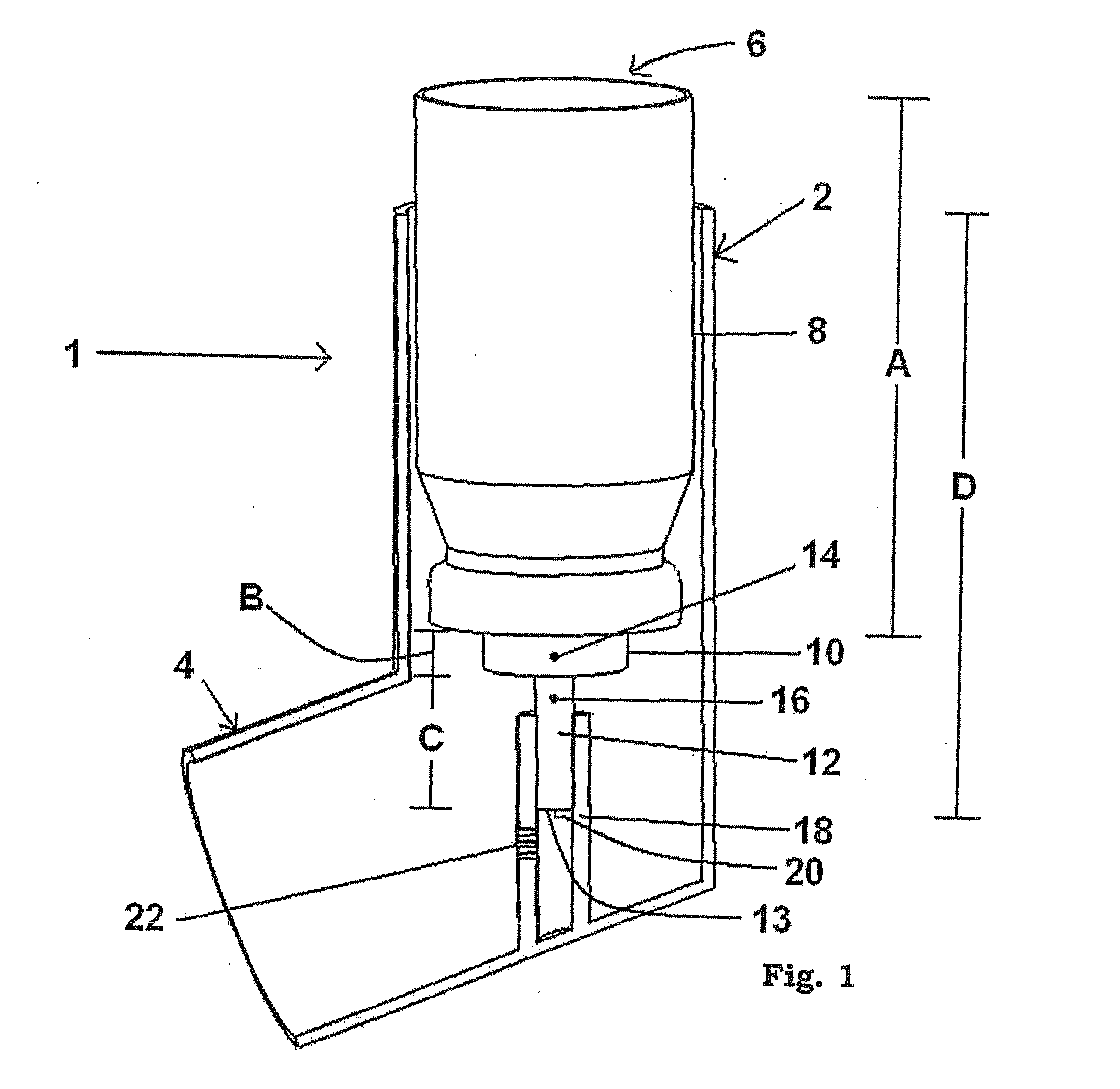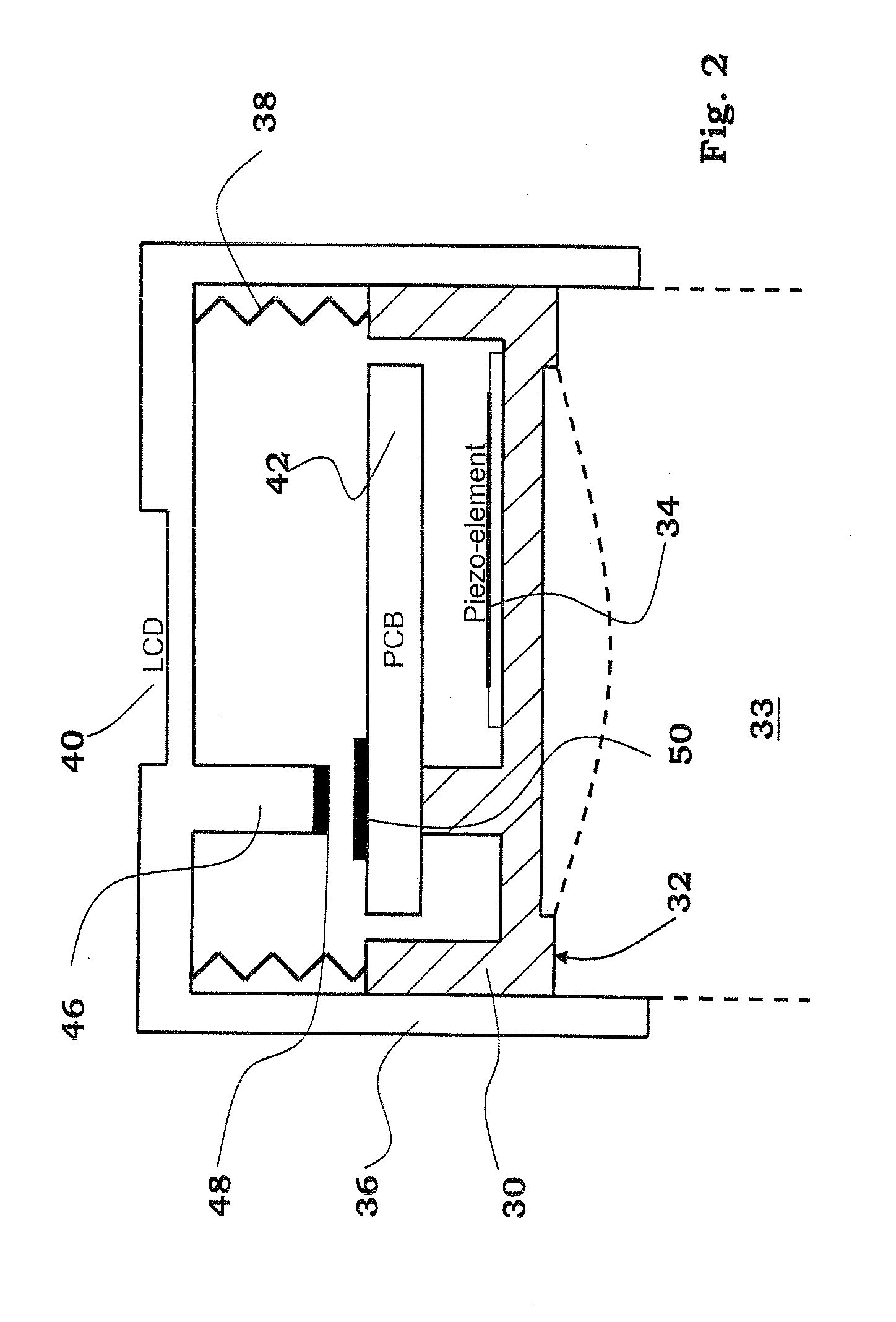Dose counter
a technology of dose counter and inhaler, which is applied in the direction of inhalators, respirators, etc., can solve the problems of unintentionally running out of medicaments, affecting the safety of users, so as to reduce the number of components, reduce the power consumption of the device, and facilitate the manufacture. simple and uncomplicated
- Summary
- Abstract
- Description
- Claims
- Application Information
AI Technical Summary
Benefits of technology
Problems solved by technology
Method used
Image
Examples
Embodiment Construction
[0031]With reference to FIG. 1, a general inhaler 1 comprises a housing 2 having a mouthpiece 4, which the user puts in his mouth when a dose of medicament is to be inhaled. The housing 2 of the inhaler is adapted to receive a standard canister 6, containing liquid medicament, wherein the distal end of the canister 6 protrude a certain distance from the distal end of the housing 2.
[0032]The canister comprises a main canister body 8 that is adapted to communicate with a dose chamber 10. The dose chamber 10 is in turn provided with a hollow spring-suspended transfer tube 12 provided with an outlet 13 in its proximal end. The dose chamber is further provided with an outlet valve 14 that is adapted to correspond to a valve 16 in the transfer tube 12.
[0033]The interior of the mouthpiece 4 is provided with a tubular receiving member 18, having an inward protruding flange 20, provided a predetermined distance from the bottom of the receiving member 18. The receiving member 18 is further pr...
PUM
 Login to View More
Login to View More Abstract
Description
Claims
Application Information
 Login to View More
Login to View More - R&D
- Intellectual Property
- Life Sciences
- Materials
- Tech Scout
- Unparalleled Data Quality
- Higher Quality Content
- 60% Fewer Hallucinations
Browse by: Latest US Patents, China's latest patents, Technical Efficacy Thesaurus, Application Domain, Technology Topic, Popular Technical Reports.
© 2025 PatSnap. All rights reserved.Legal|Privacy policy|Modern Slavery Act Transparency Statement|Sitemap|About US| Contact US: help@patsnap.com



